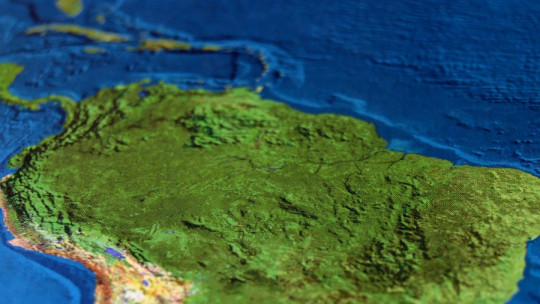
What would you think if I told you that 80% of your conflicts never really existed! And as strange as this statement may seem, it is totally true. And the problem lies in the idea we have about the perception of reality
We tend to assume that our senses show us reality as it is, without stopping to reflect that the brain, as such, is a biocomputer locked in a cranial vault, which has never seen reality. The only thing you can do is create a subjective reality based on its interpretation of the information provided by the sense organs, which in the end are nothing more than bits of information, encoded in chemical or electrical codes.
As you can understand, what each of us “Sees” is a map, a drawing or a simplified idea of the complex territory.
Differences between the map and the territory
The map is not the same as the territory. Let’s see the difference.
The territory is the external reality that surrounds you It is what it is, independently. Therefore, it is objective.
Instead, the map is the mental representation of what you believe (and, consequently, you perceive) the objective reality of the territory itself. It is your way of seeing things and experiencing them. As a result, the map always depends on subjectivity.
What does it depend on? Of the senses (smell, sight, hearing, touch and taste), of beliefs, of values and principles, of memories, of cultural and social patterns. All of them are your filters. Those filters differentiate you from other people. They are activated, consciously and unconsciously, every time you experience something, whatever the type of experience.

Neurolinguistic Programming focuses on the map and not the territory. Thus, it is important that you know your own map of the situation you want to work on. Because what you are going to do is work on your internal reality, the map.
From here you have two steps to follow:
This knowledge will lead you to more empathetic relationships where we can create stronger Psychoaffective bonds, which will improve each of our relationships, both interpersonal and intrapersonal.
The metamodel to modify the map
The metamodel is an amazing resource for bringing someone out of their resourceless map and into the see-hear-feel reality their world map refers to. At that point, they are in the perfect place to change the meanings that have been assigned to those representations
This opening opens up the possibility of changes that will return you to a more inventive map.
Metamodel questions not only dismantle resourceless maps and limiting beliefs, but are also a specific tool for people to have greater specificity about what they are talking about
For example, when someone says “No one cares about me,” you may believe that what they are saying at that moment is true. The metamodel questions will allow them to expand their map of the world, making them see that they may not be able to know what others in the world feel, and perhaps even make them see that someone cares about them.
The metamodel lights the way
As a coach, friend, etc., meta model questions can also be used to help you better understand what another person means
For example, when someone says, “He hurt me,” your world map might lead you to think that the person was physically hurt. The other person may have been saying that his spouse didn’t compliment him on his new haircut. Big difference!
By using metamodel questions, you can gain a much better understanding of other people’s maps, while preventing your assumptions from conflicting with theirs.
The metamodel can be employed to achieve clarity and precision for yourself and others, to make outcomes more specific and achievable, to destabilize limiting maps, beliefs, and states, and to enrich resourceful states, and more.
I wonder what specific changes will occur after what you’ve read now.








